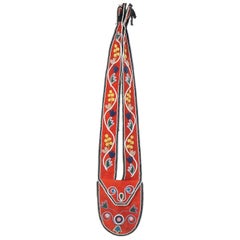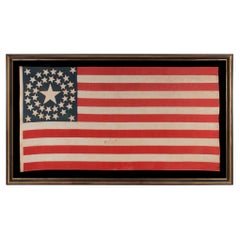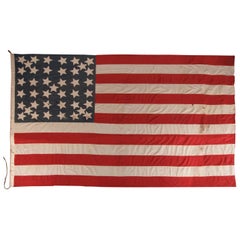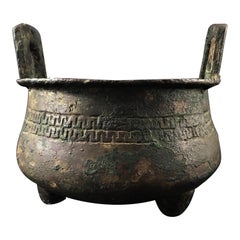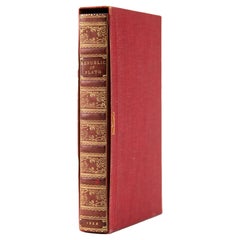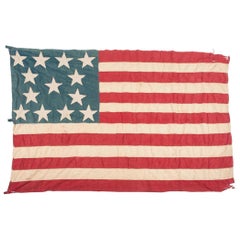Collectibles and Curiosities
Late 19th Century Chinese Qing Antique Collectibles and Curiosities
Silk, Bamboo, Glass
Mid-19th Century American Native American Antique Collectibles and Curiosities
Other
Late 19th Century American Antique Collectibles and Curiosities
Cotton
1850s American Antique Collectibles and Curiosities
Cotton
1880s American Antique Collectibles and Curiosities
Cotton
1860s American Antique Collectibles and Curiosities
Cotton
15th Century and Earlier Chinese Archaistic Antique Collectibles and Curiosities
Bronze
1940s American Native American Vintage Collectibles and Curiosities
Wood
Early 1900s Chinese Edwardian Antique Collectibles and Curiosities
Bamboo
19th Century Chinese Qing Antique Collectibles and Curiosities
Lacquer
20th Century American Collectibles and Curiosities
Silver
Mid-20th Century American Modern Collectibles and Curiosities
Paper
20th Century American Collectibles and Curiosities
Silver
20th Century American Collectibles and Curiosities
Silver
1860s American American Colonial Antique Collectibles and Curiosities
Paper
Late 19th Century Chinese Qing Antique Collectibles and Curiosities
Hardwood, Elm
20th Century Chinese Chinese Export Collectibles and Curiosities
Lacquer, Wood
1880s American Eastlake Antique Collectibles and Curiosities
Velvet, Oak
Late 19th Century Antique Collectibles and Curiosities
Leather
Late 19th Century Antique Collectibles and Curiosities
Fabric
Late 19th Century American Antique Collectibles and Curiosities
Wool
Late 19th Century American Antique Collectibles and Curiosities
Wool
Late 19th Century American Antique Collectibles and Curiosities
Wool
Late 19th Century American Antique Collectibles and Curiosities
Wool
1870s French Classical Roman Antique Collectibles and Curiosities
Paper
Late 19th Century American Antique Collectibles and Curiosities
Wool
Late 19th Century Czech Bohemian Antique Collectibles and Curiosities
Glass
1850s American Antique Collectibles and Curiosities
Cotton
Late 19th Century American Other Antique Collectibles and Curiosities
Wool
19th Century Turkish Islamic Antique Collectibles and Curiosities
Silk
Antique and Vintage Collectibles and Curiosities for Sale
Antique and vintage collectibles and curiosities can bring whimsy and wonder to any interior.
Decorating with old scientific instruments, historical memorabilia and vintage musical instruments, as well as other authentic collectibles and curiosities that can be found on 1stDibs, presents an opportunity to create a unique, natural history museum-like atmosphere in your home that can provoke conversation as often as it pays tribute to how far we’ve come in understanding our world.
And bringing collectibles and curiosities into your space is actually on trend — Wunderkammern, or curiosity cabinets, were all the rage in Europe during the 1500s and continued to have adherents there and in the U.S. in the following centuries. Today, however, they’re experiencing a real surge in popularity and influencing how many interior designers are furnishing and decorating homes — combining contemporary with antique, scientific with tribal, earthly with extraterrestrial, Les Lalanne tables with Flemish tapestries.
The original Wunderkammern were entire rooms filled with objects demonstrating their owners’ worldly knowledge: A proper one included artificiala or preciosa (objets d’art); naturalia (such as skeletons, shells, minerals); exotica (taxidermy or dried plants); and scientifica (scientific instruments), frequently alongside religious relics and ancient artifacts.
Pay tribute to a history of rich and diverse musical traditions that have taken shape all over the world by decorating your home with a collection of antique and vintage musical instruments — with a little help from strong hanging wire or some wall hooks, vintage brass instruments such as a gong, French horn or trumpet can help elevate a home office or complement the efforts you’ve made to ensure a welcoming vibe in your home’s entryway. Bells or antique wind instruments can add provocative metallic contrasts to dark woods as tabletop decorative objects.
Create an intriguing focal point with Georgian scientific instruments, such as stick barometers with mahogany cases or lacquered brass telescopes. These items stem from an era named for the monarchies of the four King Georges, who ruled England in succession starting in 1714 (plus King William’s reign, which lasted until 1837). Just as there was beautiful jewelry produced during the period that today is coveted by collectors, there is much to be found in the collectibles and curiosities realm too.
Wanderlust, nostalgia and a shared love of good design are contributing factors to certain trends in decorating — just as vintage trunks and luggage have reappeared as furniture or home accents in a bedroom or foyer, decorating with globes, maps or nautical objects is similarly rooted in the allure of travel and a penchant for the stylish finishing touch that collectibles bring to our homes.
Find a wide range of antique and vintage collectibles and curiosities on 1stDibs.
Read More
Pamela Shamshiri Shares the Secrets behind Her First-Ever Book and Its Effortlessly Cool Interiors
The sought-after designer worked with the team at Hoffman Creative to produce a monograph that beautifully showcases some of Studio Shamshiri's most inspiring projects.
Moroccan Artworks and Objects Take Center Stage in an Extraordinary Villa in Tangier
Italian writer and collector Umberto Pasti opens the doors to his remarkable cave of wonders in North Africa.
Montecito Has Drawn Royalty and Celebrities, and These Homes Are Proof of Its Allure
Hollywood A-listers, ex-pat aristocrats and art collectors and style setters of all stripes appreciate the allure of the coastal California hamlet — much on our minds after recent winter floods.
Whaam! Blam! Pow! — a New Book on Pop Art Packs a Punch
Publishing house Assouline and writer Julie Belcove have teamed up to trace the history of the genre, from Roy Lichtenstein, Andy Warhol and Yayoi Kusama to Mickalene Thomas and Jeff Koons.
The Sparkling Legacy of Tiffany & Co. Explained, One Jewel at a Time
A gorgeous new book celebrates — and memorializes — the iconic jeweler’s rich heritage.
What Makes a Gem-Encrusted Chess Set Worth $4 Million?
The world’s most opulent chess set, weighing in at 513 carats, is literally fit for a king and queen.
Tauba Auerbach’s Geometric Pop-Up Book Is Mighty Rare, Thanks to a Hurricane
This sculptural art book has an epic backstory of its own.
Step inside the Storied Mansions of Palm Beach’s Most Effervescent Architect
From Spanish-style courtyards to fanciful fountains, these acclaimed structures abound in surprising and elegant details.

